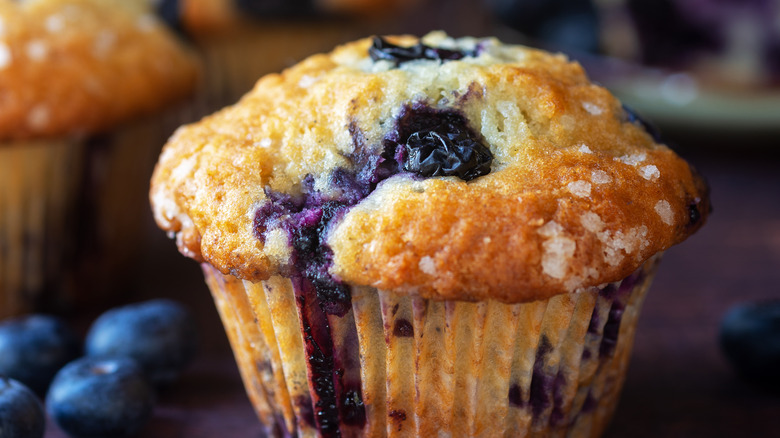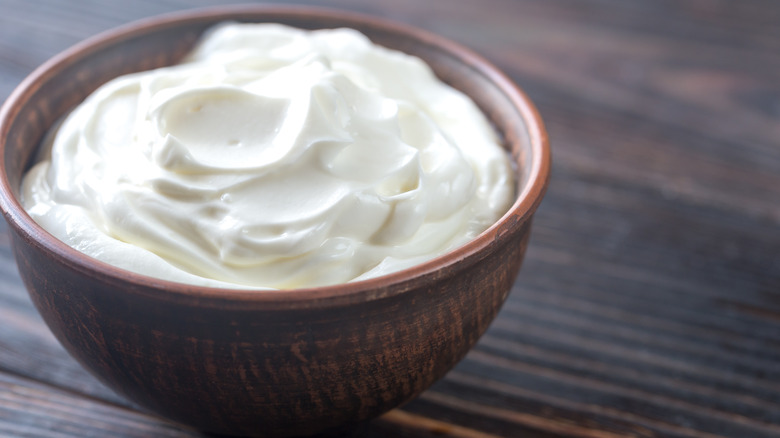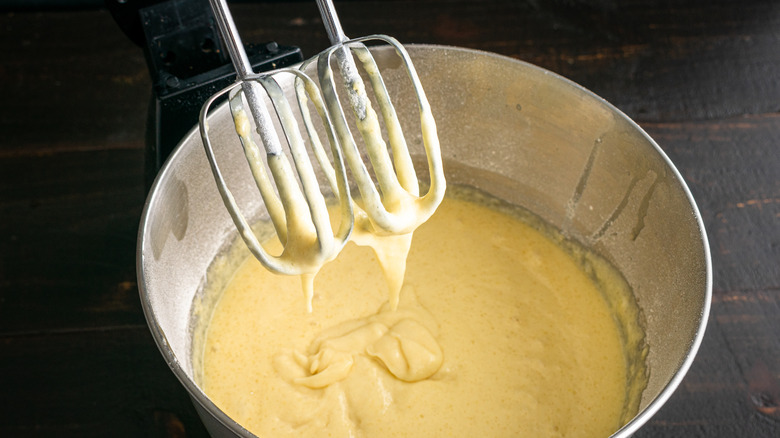The Creamy Secret Ingredient For Muffins That Are Light As Air
A properly fluffy muffin can turn your morning around. While we love muffin tops as much as the next person, we'll admit, we enjoy the stumps, too. Plus, muffins can only develop their crusty, crunchy tops and break free of the tin when their ingredients help them rise.
As such, we have to celebrate one very important baking heavy hitter. Surprisingly enough, it's another breakfast staple: yogurt. The acidic dairy, which is already the secret to extra juicy chicken, can activate powdered leavening agents while adding fat and moisture to the bake. That's a win-win-win in our book.
Recipes featuring the fermented dairy also have home cooks in mind and often encourage bakers to use up the items they already have in their fridge. This is especially handy knowledge for those struggling to finish an open tub of yogurt before it goes bad, or you want an excuse to make another batch of Grandma's homemade yogurt. So start taking inventory next time you clean out your fridge, and try to pick up a bag of frozen blueberries or some lemons on your next trip to the store.
Yogurt's role in baking
Golden-brown cakes and muffins welcome the cultured dairy with open arms and tender crumbs. The acidic ingredient reacts with baking soda to produce the airy bubbles and ultimately results in a plush, expansive dessert — or morning snack. Make sure to use full-fat yogurt to get the most tender interior.
The dairy also adds to the taste of a straightforward pastry. Its tart flavor mellows and melds with a muffin's sugar and ingredients, but brings a tang that helps balance the sweet batter. Most recipes call for plain yogurt to ensure baked goods gain moisture without an extra infusion of sugar — though you can experiment with vanilla or even fruit-flavored versions for extra flavor.
Before you get out the muffin tin, take a moment to consider the type of yogurt you use. Though loose European-style and thick Greek dairy both work well in cakey treats, they yield different results. Thicker yogurt will produce a higher rise and a denser cake. If a recipe calls specifically for runny American style and you only have thick Icelandic skyr or Greek yogurt, you can also add a splash of water or milk to thin the dairy. On the flip side, you can strain yogurt through a cheesecloth or fine sieve to thicken it.
Other dairy to bake with
Yogurt isn't the only cultured dairy in the baker's arsenal. Try not to overlook sour cream and crème fraîche, two other delightful fermented items that you can swap for the breakfast food. Both are acidic and rich in fat, which means they'll jump-start your baking soda and add moisture to muffins and other baked goods.
Though it won't yield exactly the same flavor or the light-as-air texture of yogurt, sour cream's tang makes it a flavorful substitute — especially for the Greek version. You can swap in the same amount, and you'll see the sour dairy shine, particularly in luxurious pound cake recipes. Of course, it differs from yogurt in that it's higher in fat and lower in protein, so you will produce a heavier cake.
Crème fraîche, another dense and acidic dairy, is more popular in Europe but can be tracked down in the U.S. It comes with a higher price tag, but it offers a more mellow, creamy flavor than sour cream and an even higher amount of fat. Some professional pastry chefs swear by the ingredient, as its lush texture and less tangy flavor make for delicate baked goods.



